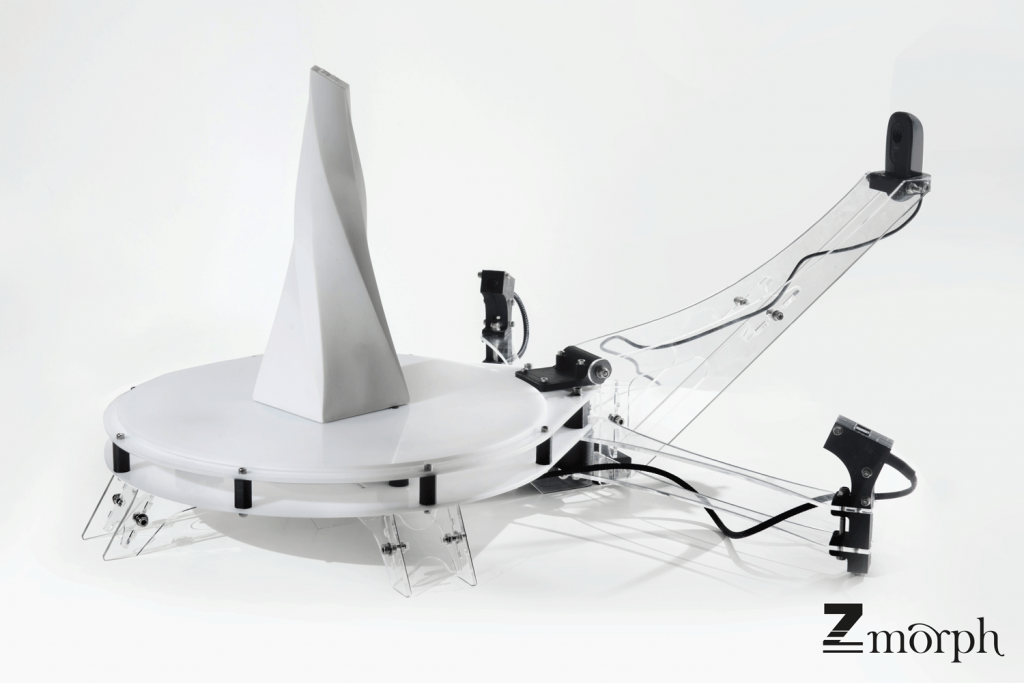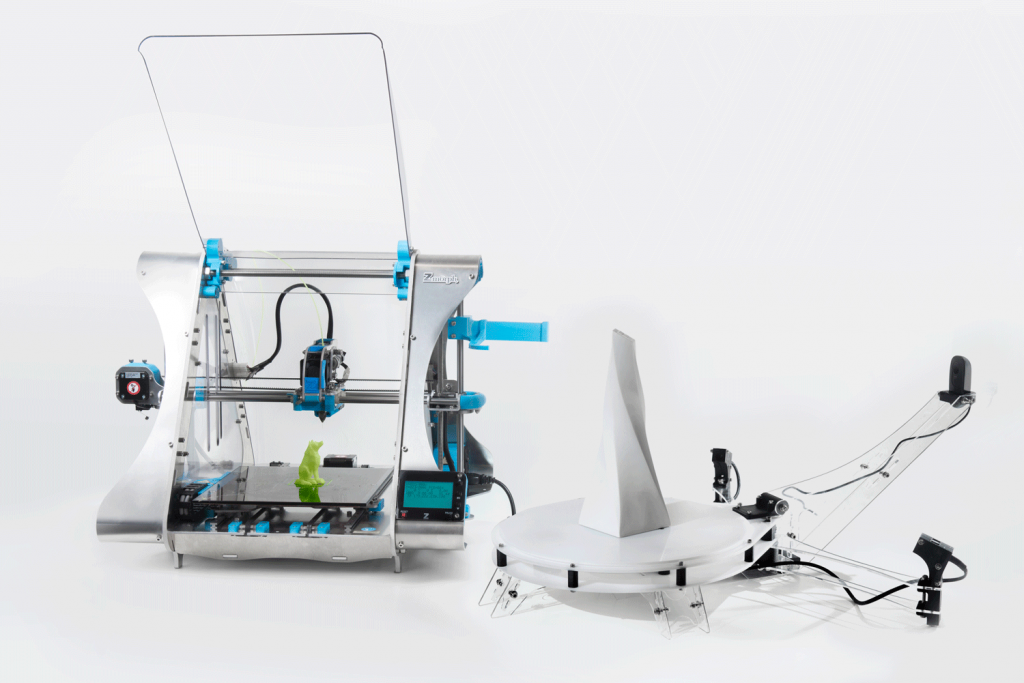Zmorph’s new 3D scanner extension is the last piece that was missing from one of the most popular modular, multipurpose desktop 3D printers. Zmorph is a Polish company specializing in the design of three-dimensional digital models used in design, fashion, and architecture and their 3D printers present an interchangeable toolhead system which enables the user to print with several types of plastic filament, ceramics, rubber, nylon, and even certain food materials, while also operating as CNC milling/laser cutting machine and, now, as a 3D scanner.
Zmorph also developed Voxelizer, its own proprietary, dedicated software designed to provide support for 3D reprinting. The new rotational 3D Scanner will provide an easy way to digitalize real objects and print them in any material through automatic Voxelizer software integration. The Zmorph team reports that the whole process of going from physical to digital takes only 7 minutes.
“Users can freely replicate and edit the properties of the object, [as well as] change the size and the required material,” says Przemek Jawoski, Zmorph’s CEO. “Furthermore, our device not only provides accurate 3D print quality, but also supports the user in the proper preparation of the model. The Voxelizer software identifies parts of the object, which may be susceptible to destruction after printing and automatically recommends strengthening the sensitive areas of design,” Jawoski concluded.
The Zmorph scanner, which is being presented at CeBit in Hannover this week, employs rotational scanning technology, with light digitally projected onto the rotating object and the point cloud captured by a video camera. The geometry capture mechanism then sends the information to the digitalization algorithm, which converts acquired data to voxels for further processing. When the editing phase is finished, the 3D model can be 3D printed on a Zmorph personal fabricator with just a few clicks. In other words, you will have a 3D Xerox machine on your desk. And, who knows, perhaps the act of replicating 3D objects, one day, will be referred to as “ZMorphing” them.





